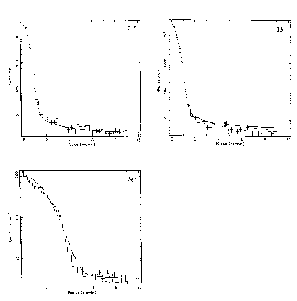The Off-Axis Point Spread Function of the ROSAT PSPC MPE/OGIP Calibration Memo CAL/ROS/93-015
--by T.Jane Turner and Gunther HasingerA new memo by Hasinger, et al. is available on the GSFC ROSAT legacy ftp account. This memo details a parameterization of the change in shape of the psf with off-axis angle. It is available under /caldb/docs/rosat/cal_ros_93_015/. Both Latex and PostScript versions of the text are available, along with PostScript versions of the figures.
An acceptable model for the off-axis dependance of the ROSAT PSPC psf has been produced that can be used to estimate the correct extraction radii required for the analysis of data from off-axis sources. In addition, this model can be used to determine whether off-axis sources are intrinsically significantly extended. The predicted psf model templates are overlaid on some sample datasets in Figure 1 (for the 0.5-1.0 keV band).
Figure 1 illustrates the limits of the accuracy of this parameterization (particularly important for the determination of significant extent). PIs are invited to contact the GOF team if they wish to discuss any aspects of this parameterization. The comparison between model and data is most difficult for sources observed in the outer region of the PSPC detector, where radial profiles must be carefully centered to obtain meaningful results. IRAF- and FITS- compatible software is available from Goddard Space Flight Center for testing the psf model versus radial profile data. For more information, contact Jane Turner at GSFC (LHEAVX::TURNER).

Figure 1
The observed psf of the ROSAT PSPC in the R2-band (0.5-1.0 keV) compared to that predicted from the ground calibration data, for sources at off-axis angles 11, 13 and 38 arcmin.

